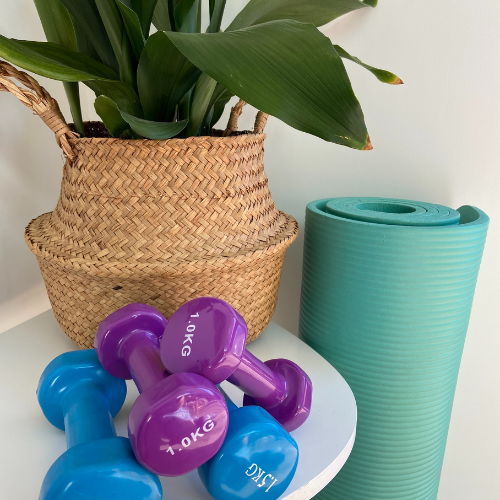Introduction
Arthritis affects millions of people worldwide, causing pain, stiffness, and inflammation in the joints. For those with knee osteoarthritis, exercise plays a crucial role in managing symptoms and maintaining mobility—and it’s even recommended in the National Institute for Health and Care Excellence (NICE) guidelines for osteoarthritis treatment.
However, not all exercises are suitable for arthritic knees. The truth is, it’s not as simple as making a “Do This, Avoid That” list. The same exercise that helps one person strengthen their knee may worsen symptoms for another, depending on their pain levels, technique, and exercise progression.
In this blog, we’ll explore common exercises that may aggravate arthritic knees, why they can be problematic, and how to modify or replace them for better results.
Why Some Exercises Aggravate Arthritic Knees
Most exercises can irritate an arthritic knee if:
- Your technique is poor – Incorrect form increases stress on the knee joint.
- You start with exercises that are too challenging – Progression is key!
- Your knee is already inflamed – Exercising on a swollen, painful knee can worsen symptoms.
It’s all about doing the right exercises, at the right time, in the right way. That’s exactly why I created my Online Arthritic Knee Program—to guide you through a staged exercise approach that strengthens your knee safely, without aggravating it.
TOP TIP – If you have aggravate your knee with exercise before then join me on my FREE Masterclass where I explore this topic further and get you started with safe exercises that will not aggravate your knee. Click here to learn more and enrol.
Now, let’s look at the exercises that can be problematic and how to modify them.
1. High-Impact Exercises
Why They Can Be Harmful
Running, jumping, and plyometric exercises place excessive stress on the knee joint, which can increase pain, swelling, and risk of injury.
Better Alternatives
Instead of high-impact exercises, try:
- Swimming – Supports your weight and reduces joint strain
- Cycling – Strengthens leg muscles without excessive impact
- Walking on flat surfaces – Helps maintain mobility safely
2. Squats (If Done Incorrectly)
Why They Can Be Harmful
Many people start squats too aggressively, going too deep or using poor form, which can worsen knee pain.
How to Modify for Arthritic Knees
- Start small – Begin with 5-10 reps, shallow depth, and proper form
- Use a resistance band – This improves muscle activation for better results
- Build up gradually – Squats should only be introduced once pain and inflammation are controlled (as we do in Stage 2 of my Arthritic Knee Program)
Deep Squats (where you lower fully to the ground) should be avoided as they increase joint stress with little benefit.

TOP TIP – FREE Masterclass!
Join me for a FREE session where you’ll learn how to avoid making your knee pain worse with the wrong exercises. I’ll show you how to reduce pain and inflammation, so you can exercise safely and with confidence. Plus, I’ll share essential exercises, tips, and more to help you get started.
3. Lunges
Why They Can Be Harmful
Lunges require good knee stability and alignment. Unfortunately, most people struggle with proper form, putting excessive strain on the knee joint.
Better Alternatives
- Focus on strengthening first – Before attempting lunges, build strength with more stable exercises
- Modify your lunges – Keep the reps low, stay higher in the movement, and avoid adding weight initially
- Assess your biomechanics – In my Arthritic Knee Program, we analyse and correct lower limb alignment before progressing to lunges
4. Leg Extensions (Machine-Based)
Why They Can Be Harmful
Leg extension machines isolate the quadriceps but put unnatural stress on the knee joint, which can exacerbate pain and inflammation.
Better Alternatives
- Modified leg extensions – In my program, I teach a safer variation that strengthens your quads without joint strain
- Straight leg raises – A great alternative to activate your quads without irritation
- Wall sits – Builds strength in a more joint-friendly way
5. High-Intensity Interval Training (HIIT)
Why It Can Be Harmful
HIIT workouts often include jumping, rapid direction changes, and high-impact moves, all of which can aggravate knee arthritis.
Better Alternatives
- Low-impact interval training – Use cycling, swimming, or rowing instead
- Walking intervals – Alternating between brisk and moderate walking provides similar cardiovascular benefits
- Strength-based circuits – Incorporate joint-friendly strength exercises into a controlled routine
So… What Should You Do Instead?
As we’ve learned, it’s not about avoiding exercises completely—it’s about doing them correctly, at the right time, and with proper modifications.
This is exactly what I guide you through in my Online Arthritic Knee Program! I would love to introduce you to this easy and effective program.
Here’s how my program helps:
Stage 1: Reduces pain and inflammation quickly
Stage 2: Builds knee strength progressively, without aggravating symptoms
Biomechanical assessment: Ensures proper alignment and technique before progressing
With the right approach, you can exercise safely and regain knee function without pain!
Learn more about the program here.
Conclusion
When it comes to arthritic knees, there’s no one-size-fits-all rulebook. Instead of following generic exercise lists, you need a tailored, progressive approach that strengthens your knees without causing flare-ups.
✔️ Avoid or modify high-impact exercises, deep squats, lunges, leg extensions, and HIIT workouts
✔️ Prioritise low-impact activities like swimming, cycling, and walking
✔️ Strengthen your knees with a structured program to prevent pain and improve function
If you’re ready to exercise safely, strengthen your knees, and improve mobility, check out my Arthritic Knee Program—I’d love to help you move with confidence again!
💪 Join my Arthritic Knee Program today and take control of your knee health!
Taking the right approach to exercise can make a huge difference in how your knees feel and function. Keep moving, stay consistent, and focus on progress, not perfection—every step forward is a step toward stronger, healthier knees!
Take care, Helen
Helen Manders BSc (Hons) MCSP HCPC
Chartered Physiotherapist Treating Arthritic Knees Since 2001
P.S. Join me for a FREE Masterclass where you’ll learn how to avoid making your knee pain worse with the wrong exercises. I’ll show you how to reduce pain and inflammation, so you can exercise safely and with confidence. Plus, I’ll share essential exercises, tips, and more to help you get started. Click to learn more & enrol.




